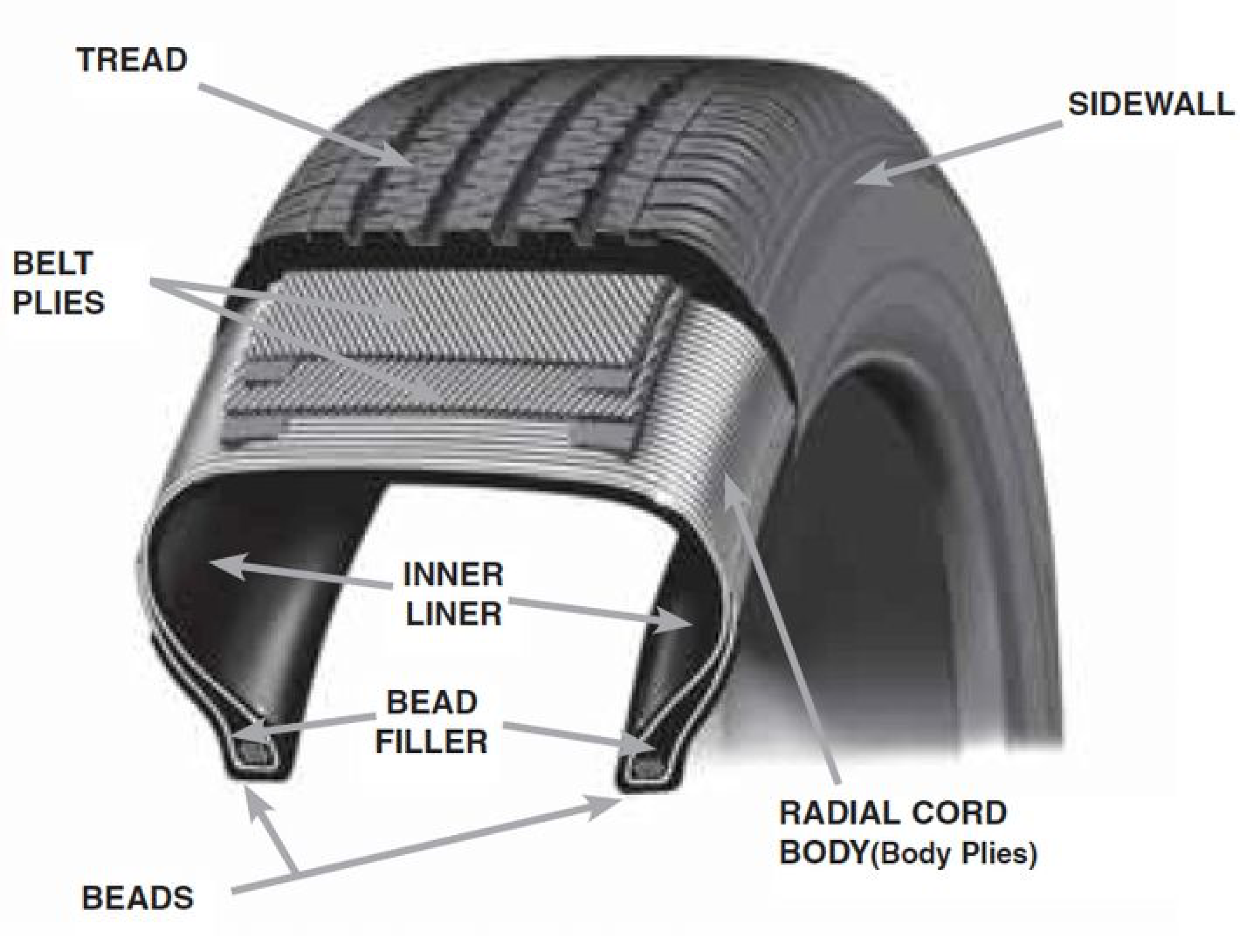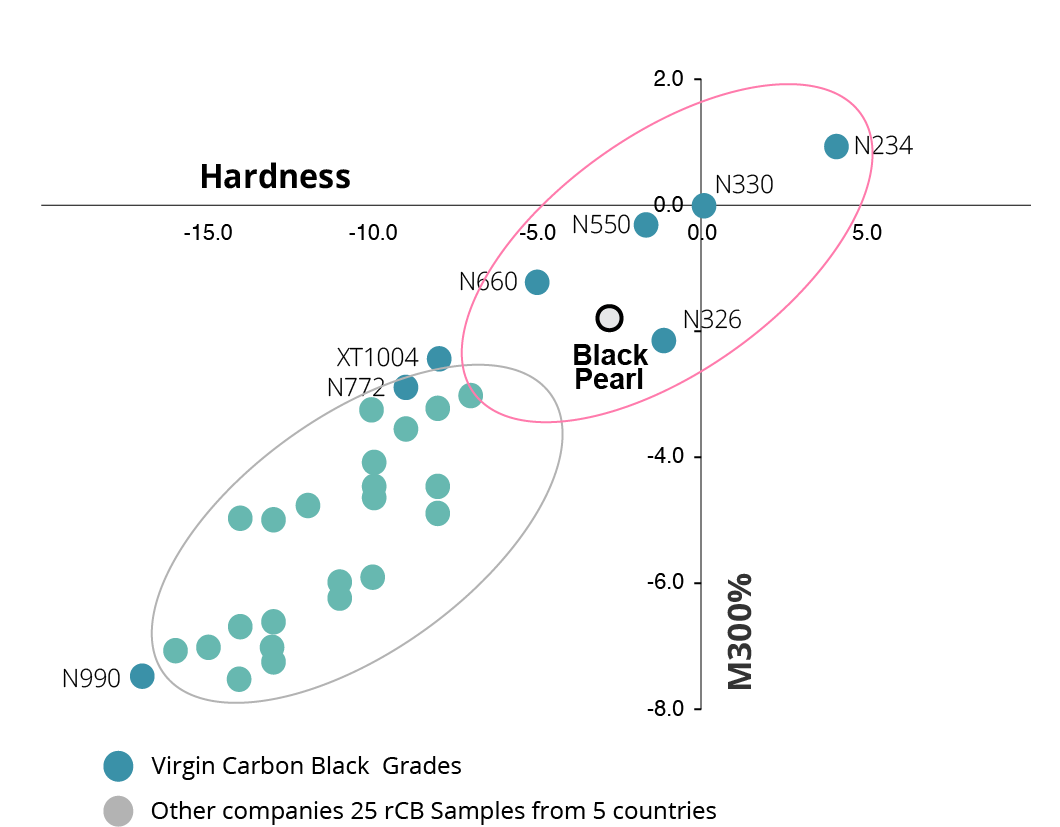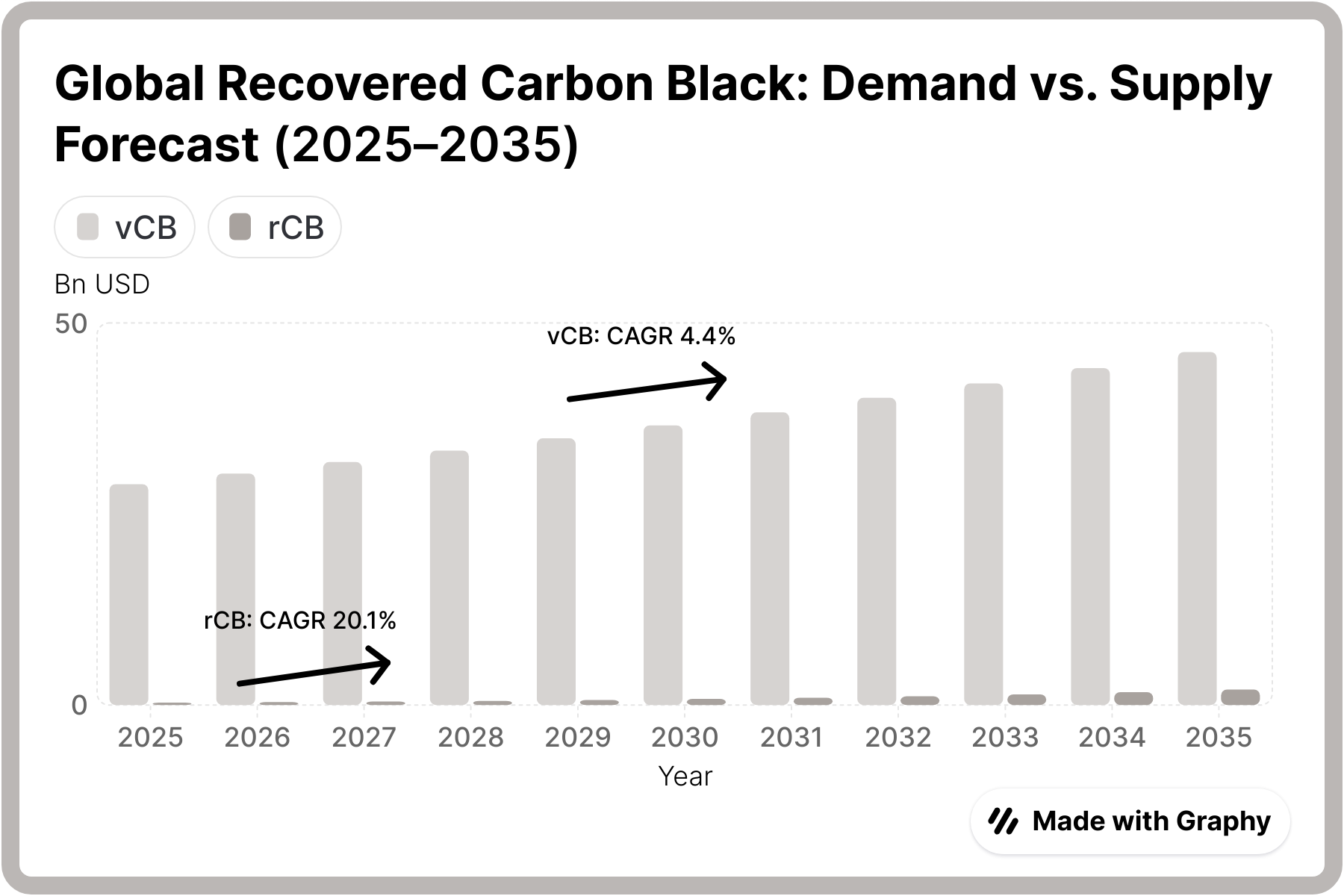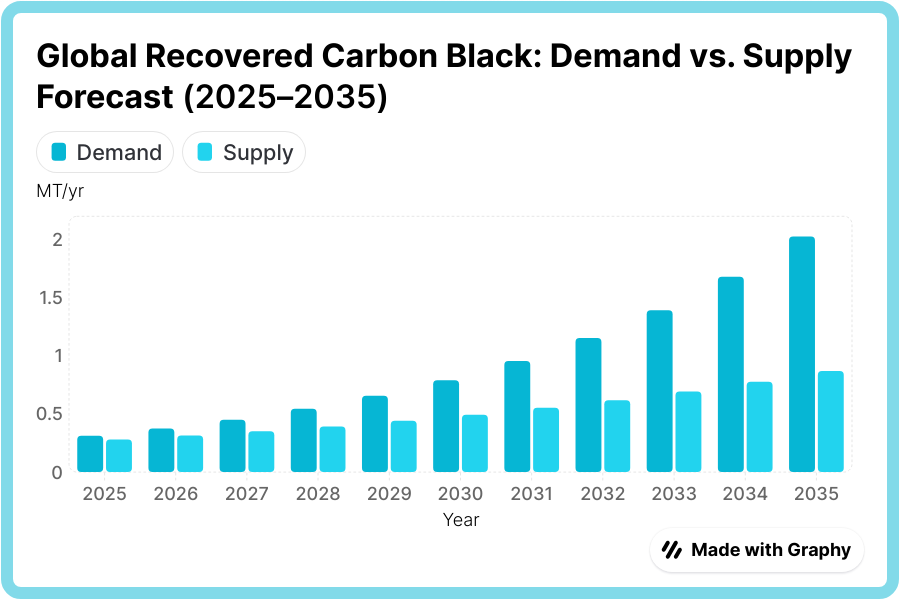Pearl Carbon — the core innovation of Black Pearl’s technology, transforming waste into premium, high-performance material.
Produced from end-of-life tires, Pearl Carbon is a next-generation recovered carbon black (rCB) engineered to match the performance of leading virgin grades. Its consistent quality and reinforcing properties make it suitable for use in tire, rubber, and industrial compounds - offering manufacturers a sustainable, high-value alternative without compromising performance.
The carbon black market is 18 Mtpa ($20B), while rCB supply today is only ~0.5 Mtpa - covering less than 3% of potential substitution demand.
Automakers and tire manufacturers face strict sustainability targets and CO2 reduction mandates, pushing them toward higher rCB adoption - but reliable, high-quality supply is scarce.
Only next-generation rCB, such as PearlCarbon, which enables 35–50%+ substitution, can realistically unlock this multimillion-ton gap and capture high-value applications like tire treads and premium rubber goods.
Even with current technology limits (10–20% substitution in most applications), the global rCB market could reach 2–4 Mtpa; yet, supply remains a fraction of that.

These zones need high stiffness and heat resistance. Pearl Carbon can partially replace vCB in bead filler compounds while keeping structural integrity and thermal stability.
The liner demands low air permeability. With optimized formulation, Pearl Carbon can be used in blends while maintaining sealing properties.
hese layers need high tensile strength and dynamic durability. Pear Carbon provides adequate reinforcement and heat stability for partial substitution.
Pearl Carbon’s fine particle size and optimized structure yield weathering, cut, and ozone resistance similar to those of N550–N660 grades.
In tests, PearL Carbon maintains traction, abrasion resistance, and rolling efficiency comparable to premium N660 blacks.
Pearl Carbon can fully replace N660 and more than half of N550 carbon black in tire carcass, sidewall, and sealing layers — delivering matching hardness and balanced mechanical performance. These two grades represent over 30% of global carbon black use, making this substitution highly impactful for the tire industry. In addition, its lower energy loss during deformation allows Pearl Carbon to be used in undertread layers of industrial tires, similar to N326. Meeting ASTM D8178 standards,



Demand for recovered carbon black is projected to exceed 2.5 million tonnes by 2035, rising with the global shift toward circular materials. Tire and rubber manufacturers are increasingly substituting virgin carbon black (vCB) with rCB to cut emissions and secure local, sustainable supply chains. Major OEMs and compounders already validate rCB blends up to 50–100% vCB replacement, accelerating adoption in automotive, industrial, and construction applications
Governments and tire producers are driving circularity mandates. The EU Green Deal, U.S. EPA recycling recognition, and OEM sustainability pledges (Michelin, Bridgestone, Continental) are accelerating the shift toward rCB integration. With every ton of rCB used, cutting 1.5–2 tons of CO₂ emissions compared to vCB, it’s now a key material in corporate decarbonization strategies and Scope 3 emission-reduction plans.
Modern pyrolysis and post-treatment systems deliver rCB grades comparable to N550–N660 performance levels. Continuous reactors, surface activation, and additive systems (like Black Pearl rCB) achieve predictable in-rubber behavior, unlocking mass-market substitution without reformulation. The next generation of rCB is no longer waste-derived filler — it’s a true material replacement for virgin carbon black.
Renewable fuel from waste - cleaner heat, power, and production
Extracted through advanced pyrolysis, Pearl Oil is a renewable, energy-rich liquid fuel derived from waste tires. It serves as a cleaner substitute for conventional fossil fuels in heat, power, and industrial processes — reducing emissions, cutting energy costs, and contributing to a more sustainable energy mix.

The market for tire-derived pyrolysis oil is entering a high-growth phase. Global demand is projected to surpass 30 million tonnes by 2035, driven by rapid industrial adoption of circular fuels. Industries such as cement, marine transport, and refining are shifting from heavy oils to low-sulfur alternatives — and TPO offers a cost-effective, low-carbon substitute. Its dual role as both a fuel and chemical feedstock ensures a consistent global pull from multiple sectors.
Global policy momentum is accelerating the market. Low-Carbon Fuel Standards (LCFS), EU circular-economy mandates, and advanced recycling legislation in over 20 U.S. states now recognize tire pyrolysis as a manufacturing process, not as waste disposal. These frameworks open the door to carbon credits, tax incentives, and long-term offtake contracts with major refineries -turning TPO into a regulated, bankable commodity.
The energy transition is pushing heavy industries toward alternative fuels. Refineries, chemical companies, and energy-intensive sectors are seeking renewable-origin inputs that reduce emissions without redesigning infrastructure. TPO fits perfectly - it’s chemically compatible, readily available, and priced below diesel equivalents. As more manufacturers commit to 50%+ recycled or low-carbon feedstock targets, tire pyrolysis oil stands to become a strategic bridge fuel in global decarbonization.
Turning tire wire into high value steel feedstock
Recovered from end-of-life tires, Pearl Steel is a high-density, impurity-free steel scrap that meets the quality standards of foundries and mills. Through advanced magnetic separation and cleaning technology, we turn a byproduct once considered waste into a valuable raw material for new steel production — reducing resource consumption and supporting a circular economy.

Every end-of-life tire holds hidden value - about 10% of its weight is steel. Through advanced recycling and pyrolysis, we extract this embedded steel and return it to the economy as high-quality scrap metal. Tire-derived steel is ideal for electric arc furnace production and contributes up to 75% energy savings compared to virgin iron processing. Even better? Each ton recycled prevents nearly 1.5 tons of CO₂ emissions.
Tire-derived steel scrap meets just 0.3–0.6% of global steel scrap demand today - but that doesn’t tell the whole story. In an industry consuming over 850 million tonnes of scrap each year, even a small new source helps. As tire recycling scales up worldwide, this scrap stream is growing steadily - and sustainably.
The expansion of advanced ELT pyrolysis plants means more tires recycled and more steel recovered. Each 1 Mt of tires processed delivers 100,000–150,000 tonnes of clean, reusable steel - perfect for low-emission steelmaking. Backed by regulation and industry momentum, tire-derived steel is becoming a consistent, circular raw material for tomorrow’s green infrastructure.